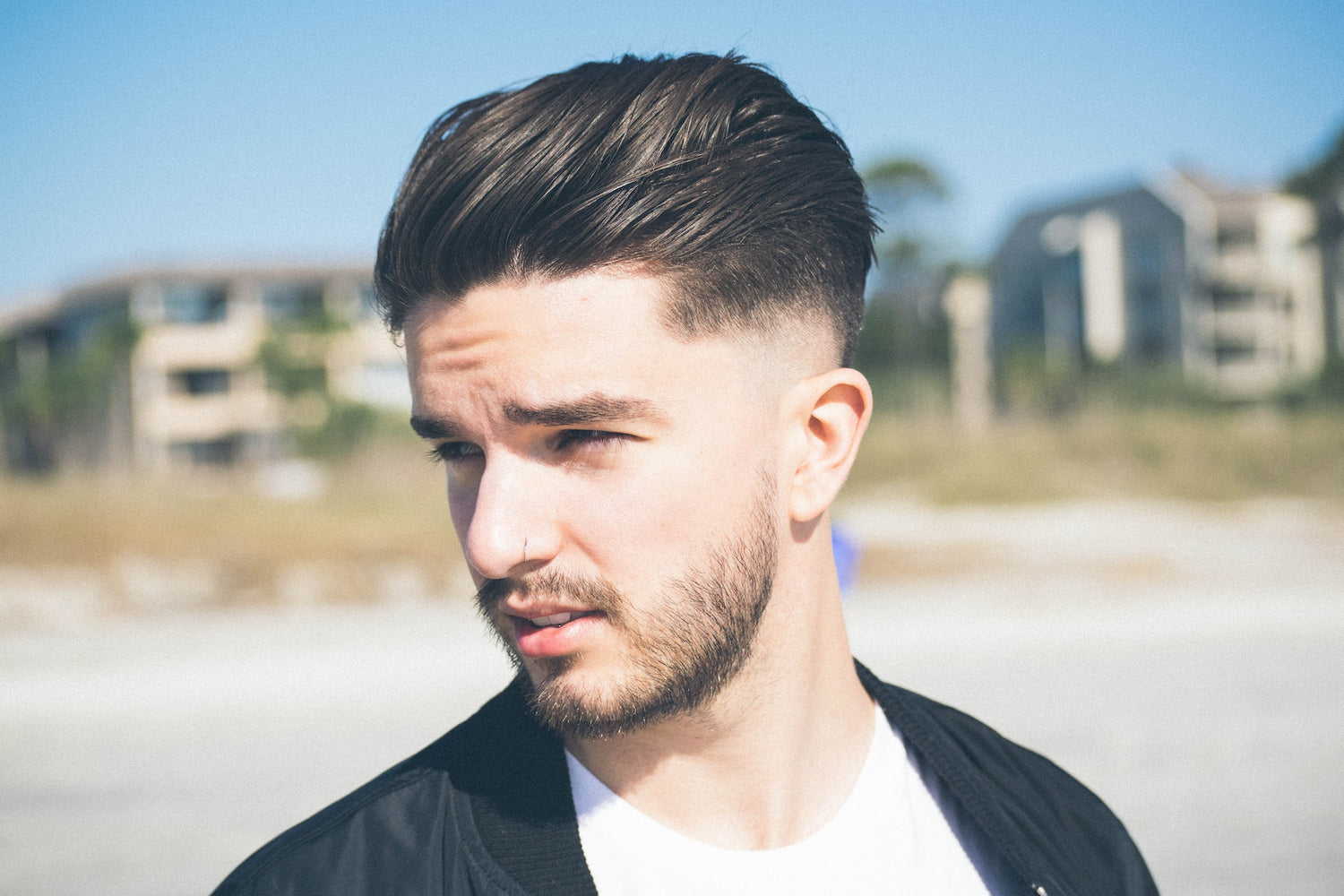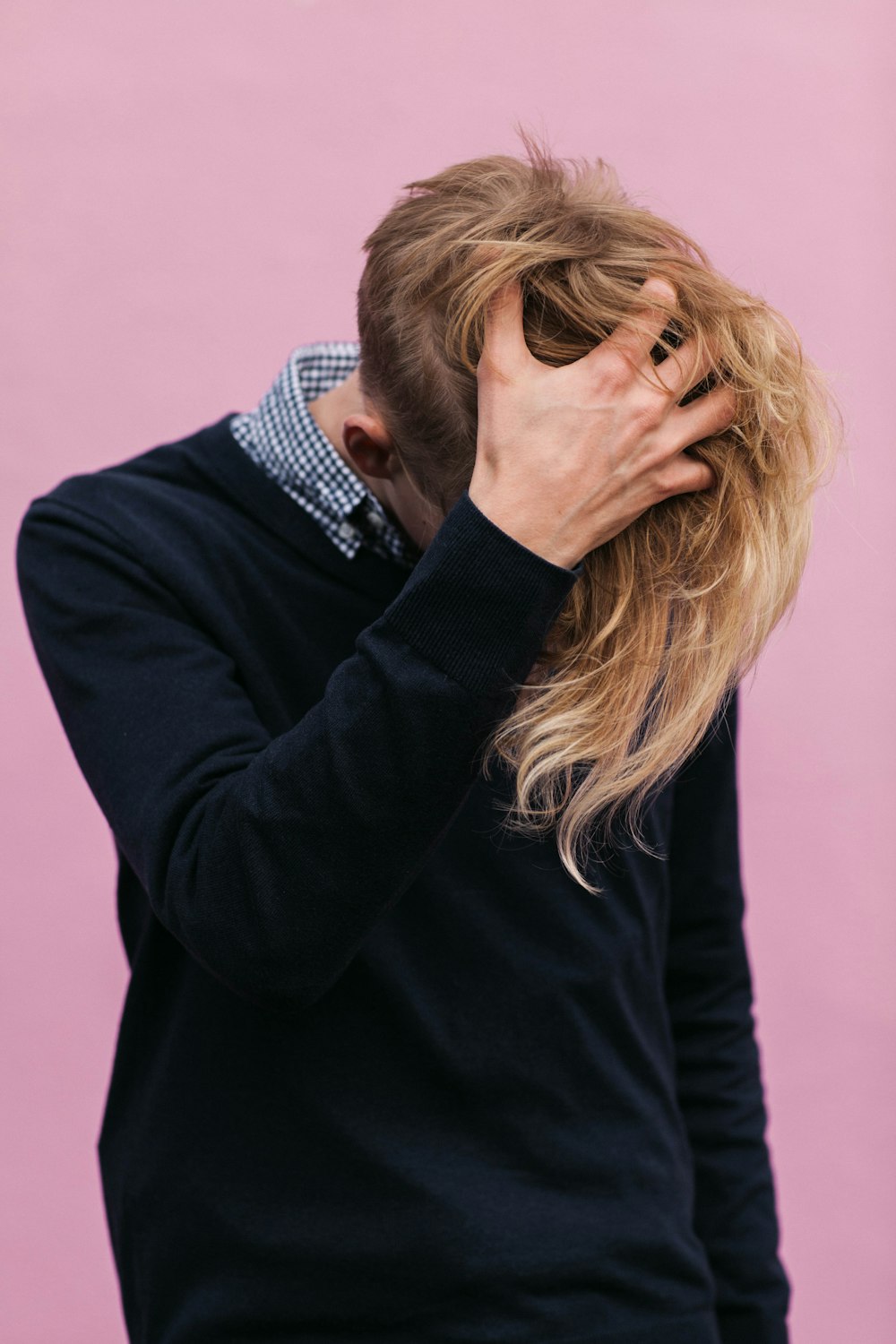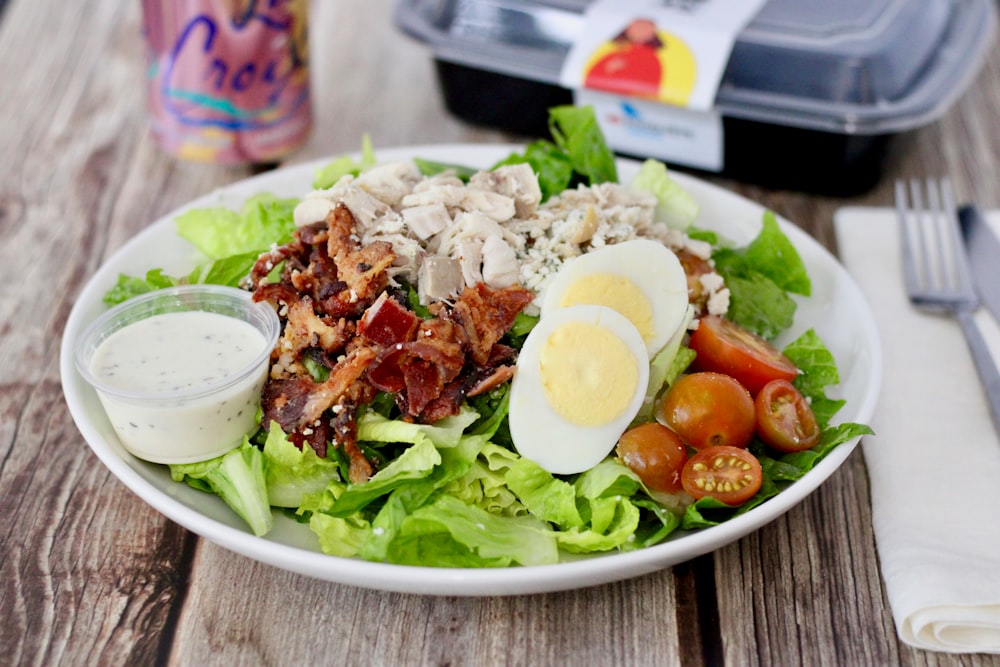Most of us face common hair issues like hair loss, dullness, and breakage, which can be more than just a cosmetic concern. Healthy hair is an indicator of our internal equilibrium. It can be a reflection of a well-nourished body, proper care, and a balanced lifestyle. When our hair is in optimal condition, it not only enhances our physical appearance but also contributes to a positive self-image.
The link between what we eat, how we live, and the health of our hair is significant. So, in this blog we will talk about some simple yet effective tips to keep our hair happy and healthy.
The Basics of Hair Health
Anatomy of Hair
Hair, though seemingly simple, has an intricate design. Most of our body, except the hands and feet, has hair. There are two main types: short "vellus" hairs (like peach fuzz) and long "terminal" hairs, found on the head, face, eyelashes, eyebrows, pubic area, chest, and belly. The amount of each type varies between people, influenced by age and gender. Children mostly have vellus hair. Women have about 30% terminal hair on their body, while men have around 90%.
Hair consists of a visible part (shaft) and an unseen part in the skin (root). The root is connected to a hair follicle, surrounded by a sheath and linked to a sebaceous gland. Each follicle has a tiny muscle (arrector pili) to make the hair stand up and nerves to sense movement and drafts.
At the hair base, the root widens into a bulb with a blood-supplying papilla. New hair cells are continuously produced near the papilla.
Hair Structure
At its core, a single strand of hair comprises three layers. The innermost layer, the medulla, is often present in thicker hair but may be absent in finer strands. The cortex, sandwiched between the medulla and the outermost cuticle, is responsible for the hair's strength, elasticity, and color. The cuticle, a protective outer layer, consists of overlapping scales that shield the hair shaft.
Hair Follicle
Below the surface of the scalp lies the hair follicle, a tiny pocket from which each hair strand emerges. The health of the hair follicle profoundly influences the quality of the hair it produces. Adequate blood flow and nourishment are crucial for sustaining the follicle's vitality.
How Does Hair Grow?
Hair grows when new cells form in the hair bulb. These cells stick together, harden, and create a full hair strand. As new hardened cells join from below, the hair is pushed up through the skin. Head hair grows about 1 cm per month, while facial hair and body hair grow more slowly.
Whether hair is straight or curly depends on its cross-sectional shape. Round hair grows straight, and if the cross-section is more oval, the hair will be curlier.
Hair color is determined by melanin in hardened cells, which varies among people and changes over time. As people age, melanin decreases, and more air in the hair causes it to lose color and turn white. The mix of original color and white hairs results in gray or white hair on the head.
Hair Growth Cycle
Anagen Phase: This is the active growth phase, where hair cells divide rapidly. The duration of this phase varies individually but typically lasts several years.
Catagen Phase: A transitional phase, catagen marks the end of active growth. During this short period, the hair follicle shrinks, and the hair stops growing. This phase lasts a few weeks.
Telogen Phase: The resting phase, telogen, sees the hair follicle remain inactive for several months. After this, the hair naturally sheds, making way for new growth.
Factors Influencing Hair Health
Our hair health isn't just about what we put on it – it's also affected by some things we can't control. Let's break down these influences:
Genetics: Our genes, the things we inherit from our family, decide a lot about our hair. Whether it's curly or straight, thick or thin – it's all in our genetic code. While we can't change our genes, knowing them helps us take better care of our hair.
Hormones: The chemicals in our bodies called hormones play a big role in how our hair grows. Changes in hormones during different life stages, like puberty or pregnancy, can affect our hair. Conditions like PCOS can also mess with our hormones and impact our locks.
Environmental Factors: The world around us can be tough on our hair. Bad weather, pollution, and too much sun exposure can damage it. Even the gadgets we use, like hairdryers and straighteners, can cause problems if we use them too much.
While we can't change our genes, we can protect our hair from the effects of hormones and the environment. In the next sections, we'll talk about the simple ways to keep our hair healthy.
Nutrition for Healthy Hair
When it comes to keeping our locks in top-notch condition, what we eat matters.
Proteins:
Think of proteins as the building blocks for strong and shiny hair. Hair is mostly made of a protein called keratin, so having enough protein in our diet is crucial. Good sources include eggs, lean meats, fish, beans, and nuts.
Vitamins:
Certain vitamins play key roles in keeping our hair happy. Vitamin A helps our scalp produce an oily substance called sebum, which keeps our hair moisturized. Vitamin E boosts blood circulation to the scalp, promoting hair growth. Vitamin D is important for hair follicle cycling, and various B-complex vitamins contribute to overall hair health. Find these vitamins in foods like carrots, spinach, nuts, and whole grains.
Minerals:
Iron, zinc, and omega-3 fatty acids are like the superheroes of hair health. Iron helps carry oxygen to hair follicles, zinc supports the hair growth cycle, and omega-3 fatty acids add shine and prevent dryness. Include foods like red meat, nuts, seeds, and fatty fish in your diet to ensure you're getting these vital minerals.
Balancing these nutrients in our meals sets the stage for healthier, more resilient hair.
Foods for Healthy Hair
Protein-Packed Goodies:
- Salmon: Rich in omega-3 fatty acids and proteins, this fish promotes hair strength.
- Eggs: A fantastic source of protein and biotin, a B-vitamin crucial for hair health.
- Greek Yogurt: Packed with protein and vitamin B5 to promote blood flow to the scalp.
Protein-Packed Smoothie: Blend Greek yogurt, a handful of berries, a banana, and a scoop of protein powder for a delicious and hair-nourishing smoothie.
Vitamin-Rich Delights:
- Spinach: Loaded with iron and vitamins A and C, supporting hair growth.
- Sweet Potatoes: High in beta-carotene, a precursor to vitamin A, crucial for a moisturized scalp.
- Nuts and Seeds: Provide vitamin E, zinc, and omega-3 fatty acids for overall hair health.
Nutty Snack Mix: Mix almonds, walnuts, and pumpkin seeds for a nutrient-packed snack to munch on throughout the day.
Minerals:
- Lean Red Meat: A top source of iron, essential for carrying oxygen to hair follicles.
- Oysters: Packed with zinc, supporting the hair growth cycle.
- Flaxseeds: Rich in omega-3 fatty acids that contribute to hair shine and hydration.
Sizzling Stir-Fry: Create a colorful stir-fry with lean beef, colorful vegetables, and a sprinkle of flaxseeds for a nutrient-packed dinner.
Lifestyle Habits for Healthy Hair
These are some simple yet impactful lifestyle habits that can make a substantial difference in the well-being of your hair.
Washing Frequency: Finding the right balance in how often you wash your hair is important. Washing too frequently can strip the hair of its natural oils, leading to dryness, while infrequent washing may result in a buildup of oils and products. Aim for washing 2-3 times a week, adjusting based on your hair type and lifestyle.
Choosing the Right Shampoo and Conditioner: Selecting the appropriate shampoo and conditioner is like choosing the perfect outfit for your hair. Consider your hair type – whether it's oily, dry, curly, or straight – and choose products tailored to your specific needs. Look for sulfate-free options to prevent excessive drying.
Excessive Heat and Chemical Treatments: Excessive heat from styling tools and harsh chemicals from treatments can take a toll on your hair's health. Whenever possible, let your hair air-dry and minimize the use of heated styling tools. When opting for chemical treatments, consult with a professional to ensure they are done with your hair's health in mind.
Scalp Care
While we often focus on the strands themselves, a healthy head of hair starts with a well-cared-for scalp. Think of your scalp as the fertile soil from which your hair grows. A healthy scalp provides a conducive environment for hair follicles to thrive. It minimises issues like dandruff, itchiness, and excessive oiliness and creates the optimal conditions for robust and vibrant hair.
Tips for Maintaining a Clean and Nourished Scalp:
Regular but Gentle Washing:
- Cleanse your scalp regularly to remove dirt, excess oil, and product buildup.
- Use a gentle, sulfate-free shampoo to avoid stripping the scalp of its natural oils.
Massage While Washing:
- While shampooing, take a few extra minutes to massage your scalp gently. This not only promotes blood circulation but also helps distribute natural oils.
Choose the Right Products:
- Opt for hair care products that suit your scalp type – whether it's oily, dry, or sensitive.
- Be mindful of ingredients and avoid products with harsh chemicals that can irritate the scalp.
Balanced Diet for Scalp Health:
- Ensure your diet includes nutrients like vitamins A and E, which contribute to a healthy scalp.
- Stay hydrated to support overall skin health, including the scalp.
Regular Scalp Massages:
- Treat yourself to regular scalp massages to enhance blood circulation and promote relaxation. You can use a few drops of nourishing oil for added benefits.
Protect from Sun and Harsh Weather:
- Just as your skin needs protection, so does your scalp. Wear a hat or use sunscreen to shield your scalp from harmful UV rays.
Hydration and Its Role in Hair Health
Water is not just a life essential for our bodies, it also maintains the health and beauty of our hair. Here is how water affects hair health:
Moisture Balance:
- Hair strands, like our skin, require moisture to stay healthy. Dehydration can lead to dry and brittle hair, making it more prone to breakage.
Nutrient Transportation:
- Water is a carrier of essential nutrients. It helps transport vitamins and minerals to hair follicles, promoting their growth and overall health.
Scalp Health:
- A well-hydrated scalp is less likely to become dry and flaky. Proper hydration supports a balanced scalp environment, reducing the risk of issues like dandruff.
Daily Water Intake Recommendations:
Individual Needs:
- The ideal daily water intake varies from person to person. Factors such as age, weight, physical activity, and climate influence how much water your body requires.
General Guideline:
- A common recommendation is to aim for eight 8-ounce glasses of water a day, known as the "8x8 rule." This is a simple and easy-to-remember guideline for staying adequately hydrated.
Listen to Your Body:
- Pay attention to your body's signals. Thirst is a natural indicator that your body needs more water. Additionally, factors like sweating and exposure to heat may increase your water requirements.
Include Hydrating Foods:
- Fruits and vegetables with high water content, such as watermelon, cucumber, and oranges, contribute to your overall hydration. Incorporating these into your diet can be a delicious way to stay hydrated.
DIY Hair Masks for Hydration:
Avocado and Honey Mask:
- Mash one ripe avocado and mix it with two tablespoons of honey.
- Apply the mixture to damp hair, focusing on the ends.
- Leave it on for 30 minutes before rinsing thoroughly. Avocado's natural oils and honey's humectant properties help lock in moisture.
Coconut Oil and Egg Mask:
- Mix two tablespoons of coconut oil with one beaten egg.
- Apply the mixture to dry hair and leave it on for about 20-30 minutes.
- Rinse with a mild shampoo. Coconut oil provides deep hydration, and the egg adds protein for strength.
Yogurt and Aloe Vera Mask:
- Combine half a cup of plain yogurt with two tablespoons of aloe vera gel.
- Apply the mixture to clean, damp hair and leave it on for 20-30 minutes.
- Rinse thoroughly. Yogurt nourishes, while aloe vera soothes and hydrates the scalp.
Tips for Preventing Dryness and Brittleness:
Avoid Hot Water:
- Wash your hair with lukewarm or cool water to prevent stripping away natural oils. Hot water can contribute to dryness and make your hair more prone to breakage.
Limit Heat Styling:
- Minimize the use of heat styling tools like hairdryers and straighteners. When needed, use them on a low or cool setting, and always apply a heat protectant.
Protect Your Hair:
- Wear a hat or use a scarf in harsh weather conditions, especially during extreme heat or cold, to shield your hair from environmental stressors.
Trim Regularly:
- Regular trims help get rid of split ends, preventing them from traveling up the hair shaft and causing more significant damage.
Choose Moisturizing Products:
- Go for shampoos and conditioners formulated for hydration, and consider using leave-in conditioners to maintain moisture throughout the day.

Common Hair Issues and Solutions
Hair loss can be a concerning issue for many which affects both men and women. The most common cause of hair loss is a hereditary condition called androgenetic alopecia, more commonly known as male-pattern baldness or female-pattern baldness.
Hormonal fluctuations due to pregnancy, childbirth, menopause, and thyroid problems can also contribute to hair loss.
Certain medical conditions, such as alopecia areata and lupus, can lead to hair loss as the body's immune system mistakenly attacks hair follicles.
Medications and Treatments
Some medications, such as those for cancer, arthritis, depression, heart problems, gout, and high blood pressure, can cause hair loss as a side effect.
Natural Remedies and Treatments
Scalp Massage: Regular scalp massages can stimulate blood flow to the hair follicles, promoting hair growth.
Aloe Vera: Aloe vera contains enzymes that can help promote healthy hair growth. Apply pure aloe vera gel to the scalp and hair, leave it for about 30 minutes, then rinse.
Essential Oils: Essential oils like rosemary, peppermint, and lavender have shown promise in promoting hair growth. Mix a few drops with a carrier oil and massage into the scalp.
Nutritional Supplements: Supplements containing vitamins like biotin, iron, and omega-3 fatty acids may support hair health. Consult with a healthcare professional before adding supplements to your routine.
RU58841 as a Hair Loss Solution
RU58841 is a topical antiandrogen that has gained attention as a potential solution for hair loss. It works by inhibiting the action of dihydrotestosterone (DHT), a hormone linked to hair loss. There is some anecdotal evidence supporting its effectiveness.
And, if you're interested in trying out something new, like RU58841 or Pyrilutamide for hair loss, we've got you covered at MV Supplements. We're happy to let you know that we can deliver these products anywhere in Europe, making it easier for you to give them a try.
But, a little heads up – before you go ahead, it's always smart to do some research and maybe chat with your doctor. They can help you figure out what might be the best fit for you.
Conclusion
From what your hair is made of to what you eat and how you take care of it, there's a bunch of things that play into having great hair.
Thanks for hanging out with us and learning about keeping your hair happy. If you're keen to give something new a shot, MV Supplements is here for you!






Leave a comment
This site is protected by hCaptcha and the hCaptcha Privacy Policy and Terms of Service apply.